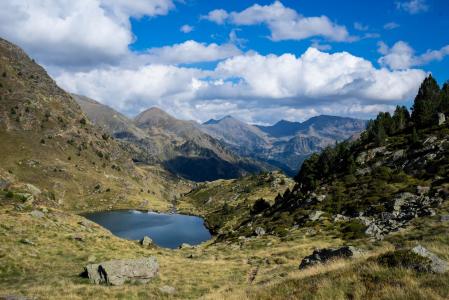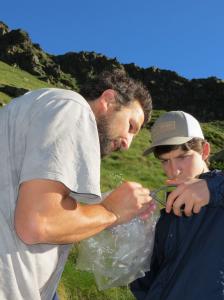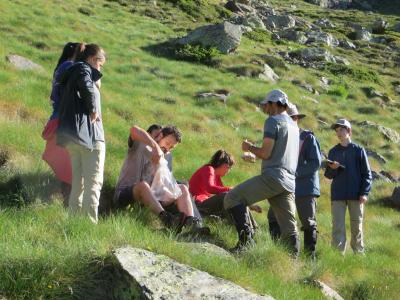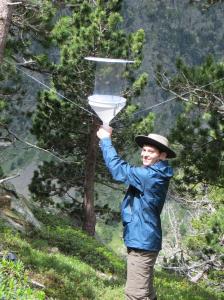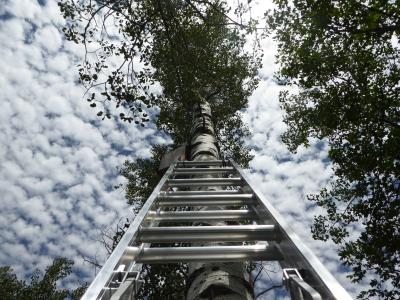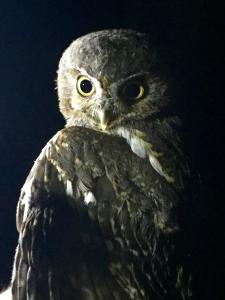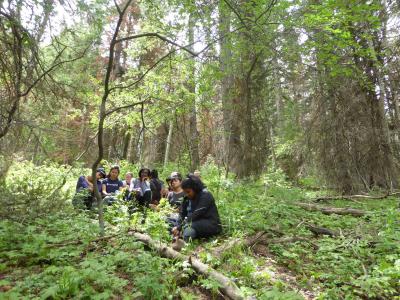Changing Climate in Andorra, Changing Minds in Massachusetts
By Zach Zimmerman, Earthwatch Groups Expedition Advisor
High school teacher Caroline Singler started her career as a field geologist before moving into education. Now, she’s leading students from her school on international and domestic expeditions to help them find their own connection to science. Check out our Q&A with Caroline and learn what field research means to her and why she feels it’s so important for students to become science literate in today’s ever-changing world.
The rural town of Sudbury, Massachusetts may not be as well-known as some of its more historical neighbors like Lexington and Concord. But at Lincoln-Sudbury Regional High School, teachers and students are making a name for themselves through citizen science projects in their own backyard and on the other side of the world. I spoke to Caroline Singler, who teaches earth science, aquatic biology, physical science, and a number of electives at Lincoln-Sudbury, to find out what makes working with Earthwatch so helpful to her and her community.
Caroline and I first met in 2016, when a plan to travel to Greece with another provider fell through. The following summer, she helped lead ten students in the Earthwatch expedition Wildlife in the Changing Andorran Pyrenees to study the effect of climate change on mountain ecosystems. She says this trip helped her students “understand how the natural world works and helped them to be good decision makers in the future.” She considers her colleagues at Lincoln-Sudbury the leaders of a “science-for-everyone” department, so it was no surprise that they’d fit in so well at Earthwatch!
Q&A with Caroline Singler
Zach Zimmerman: How did you get involved in teaching and what keeps you excited about it?
Caroline Singler: I started my career as a geologist working in the environmental consulting field (hydrogeological site investigations). I reached a point in that career where I was getting close to moving into project management, and I did not think that was for me. I preferred the science side of the job and doing field investigations. Teaching had always been in the back of my mind as something I might enjoy, and I liked the idea of working with young people. What keeps me most excited about teaching is the idea of finding new ways to get students interested in and excited about science.
I want students to know that science is not just for scientists. I am excited to provide students with opportunities to experience science in new and different ways, not just traditional classroom learning.
ZZ: What does citizen science mean to you?
CS: For me, citizen science is an opportunity to bring the real world into the classroom – or better yet, to bring students into the real world. It is an opportunity for them to see that science is not just a subject in a textbook, but is part of their everyday lives. And it’s a way to get students outside experiencing the natural world.
ZZ: What’s your vision for the “science-literate student of the future” and how does citizen science help to reinforce this?
CS: I guess I’d say that the “science-literate” student has an understanding about the interconnectedness of things in the natural world – that physical, biological, chemical, geological factors all work together in natural systems – and they have a sense of how humans can impact and are impacted by those systems. They will consider the scientific meaning behind things when they make decisions in the future. They will ask questions about things they don’t understand rather than accepting them at face value. They will be problem solvers and critical thinkers and carry that over into all aspects of their lives. And they will appreciate the incredible beauty and wonder of nature.
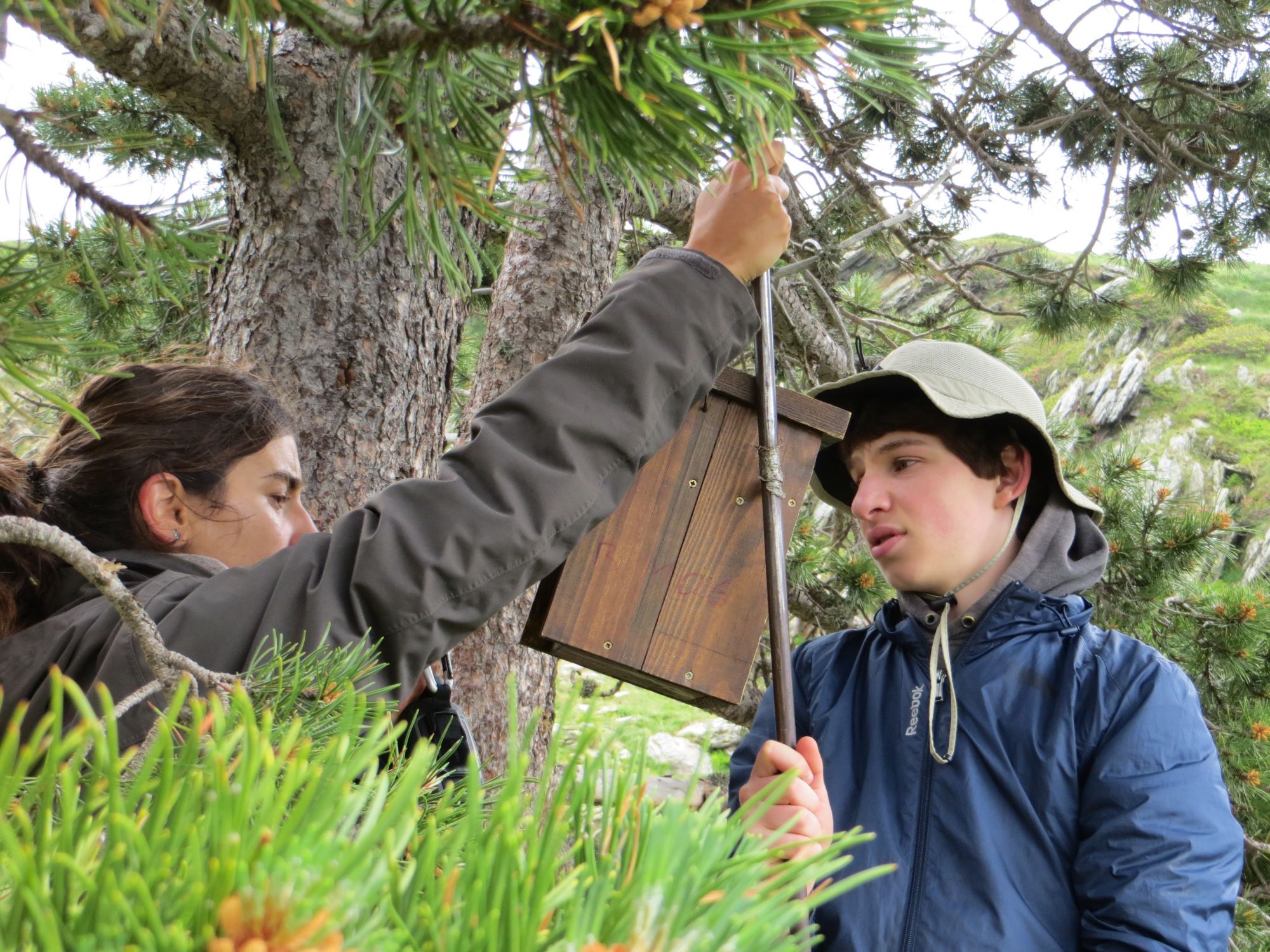
ZZ: In 2017, you led a team of students on Earthwatch’s Wildlife in the Changing Andorran Pyrenees expedition. What was it like leading your first Earthwatch team, and what impact did the trip have on your students?
CS: The Andorra science team is an amazing group of individuals. We could not have asked for better leaders than lead scientist Bernat Claramunt-López and research staff Jana Marco and Guillem Mas. Andorra itself was a highlight – spectacular scenery, challenging hikes to even more spectacular scenery views. It was physically exhausting, but it was mentally stimulating and worth every minute.
Our goal was simply to provide students with an authentic field research experience, and they had that. We brought 10 students to Andorra, and most of them had very little outdoor experience, but they thrived in that environment. They immersed themselves in each field task, no matter how physically challenging. By the end of the expedition, they were scrambling up and down slopes like mountain goats and even climbing trees to help hang traps.
ZZ: You’ll be joining us again this summer on the expedition Following Forest Owls in the Western U.S. Why did you choose this project?
CS: This year, we wanted to try a domestic trip to show students that there is great scientific research happening in the U.S. and perhaps encourage some to try it who might not want to take on the challenge of foreign travel. Three of the four are 10th graders – my hope is they will bring back stories of their experiences to share with other Lincoln-Sudbury students, which might increase enthusiasm and participation in future Earthwatch expeditions. Also, I’d love to see those students be inspired to take what they learn about doing field science and perhaps pursue some independent study projects when they get home.
To learn more about group travel opportunities and teen expeditions, reach out to Zach Zimmerman by emailing schools@earthwatch.org.
